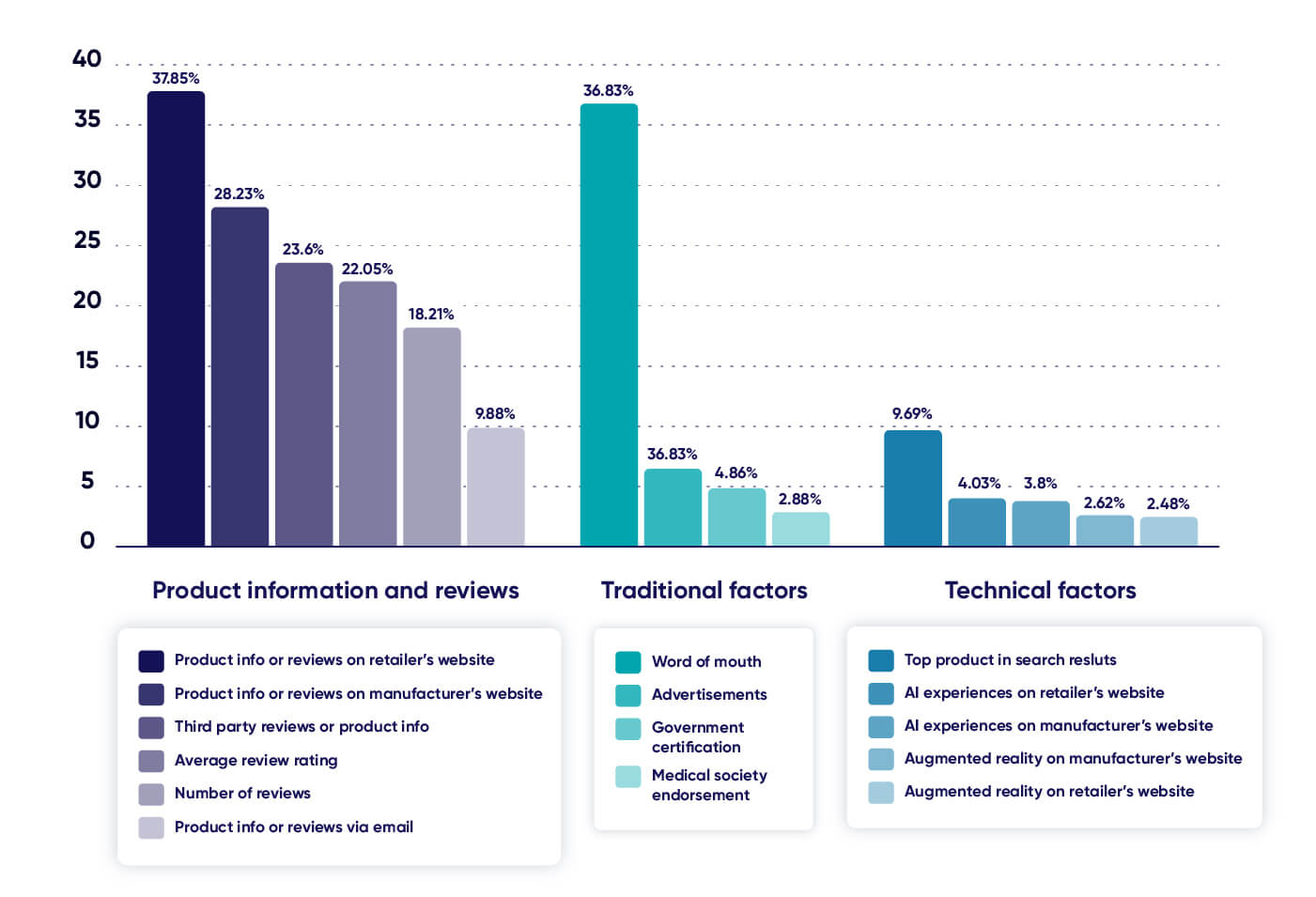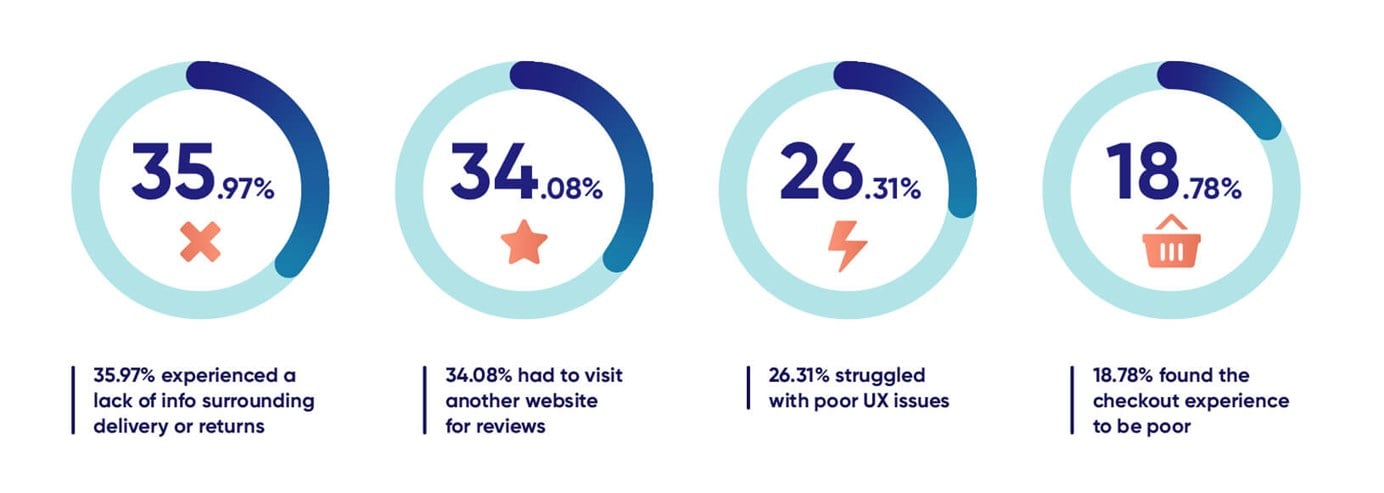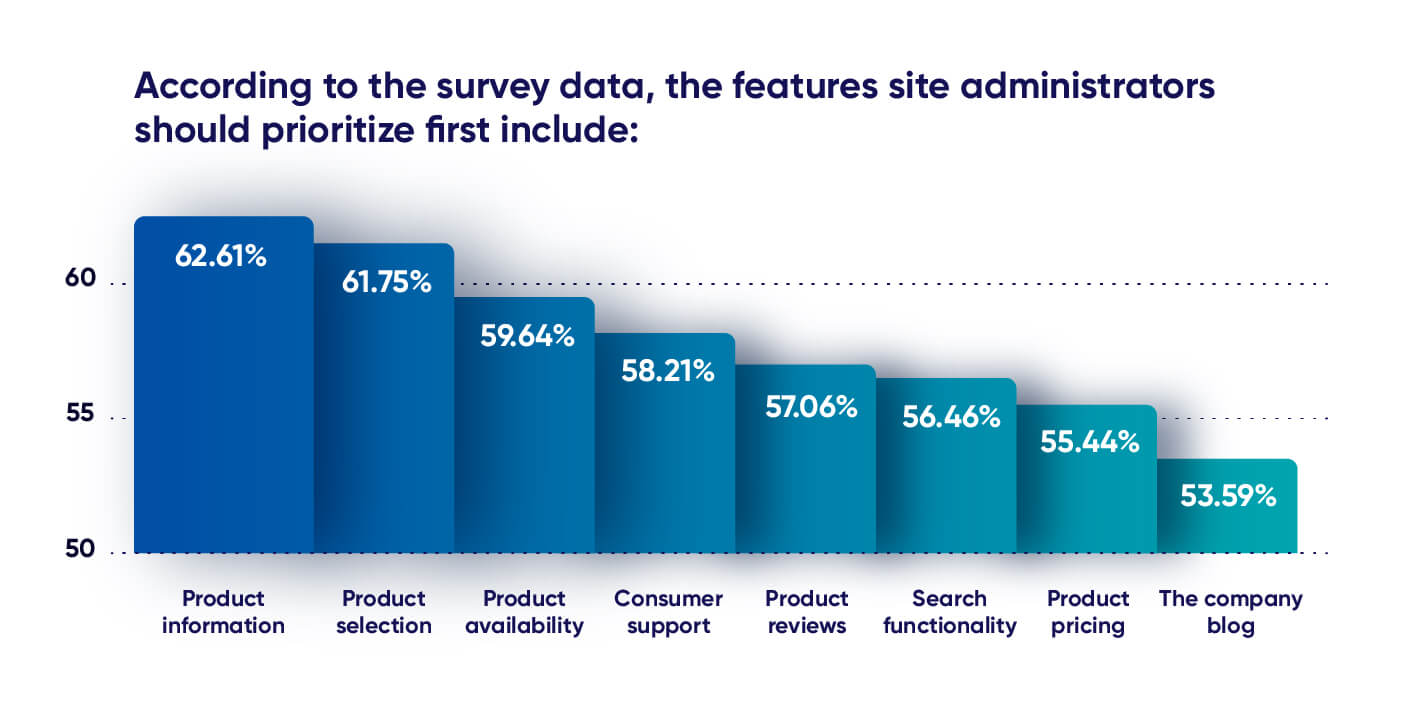Customer service remains paramount for retailers and manufacturers but its definition has shifted drastically over the last year. Today that customer service is determined less by helpful staffers and more by a brand’s effective, accessible website and suite of digital properties.
Is your brand keeping up with this trend or are you falling behind the competition?
The importance of your digital properties has never been greater
As in-person experiences remain the exception, consumers are placing more trust in brand websites than ever before. Research from Siteimprove’s new report: “Achieving success in the age of the digital consumer” - created in conjunction with Adobe and Capgemini - finds that 83% of respondents said their online research experience was somewhat or very important to their purchase process. Of those respondents, 43% cited it as very important.
Product information and reviews were routinely cited as the most important venues to deliver this information. More than one-third (37.85%) said that product information or reviews was the most important factor for online purchase decisions. Product pages were also host to other top decision-making content including third party reviews, average review rating, and number of reviews.
When compared with traditional purchase decision influencers such as word of mouth, advertisements, certification, or endorsements, only word of mouth cracked the top seven key influencers consumers cited in guiding purchase decisions.

Website service failures extend beyond the absence of reviews
We’ve established that consumers value reviews so a website flush with reviews is all you need to meet the needs of today’s consumer, correct?
While consumers overwhelmingly point to reviews as a key factor in guiding purchase decisions, there are other aspects of a retailer or manufacturer’s website that can cause customers to turn away before making a purchase.
Take accessibility for example. The research found that – when confronted with an accessibility issue – 39.17% would contact support. However, 30.64% say they would abandon the site and 26.88% say they would simply struggle through the experience. This means that nearly 60% of these site visitors are being provided an experience that fails to meet their needs and brands are left unaware of the problem.
The result? At best these consumers are hesitant to visit the site in the future. At worst, they’ll never return and may share their negative experiences with others.

In the digital age, word of mouth can affect your brand in more ways than just positive or negative recorded reviews. Formal review sites and social media platforms like Yelp, Google Reviews, YouTube, Twitter, and Facebook all channel review content outside of your website, meaning if your brand inadvertently creates negative website experiences, the aftermath can spill to multiple sources outside your immediate visibility and these instances can dramatically steer future consumer buying habits.
Meeting today’s consumer standards: few websites do
Price, understandably, remains a critical consideration when making a purchase, yet the report finds that more than 60% of surveyed consumers experienced instances of inconsistent pricing between manufacturer and retail websites. In many cases prices were reported to be cheaper when shopping through the retailer, discouraging future visits to manufacturer’s websites.
This price discrepancy is only one factor however that hinders businesses from converting through their website.
The research also found that:

Charting your path forward
We’ve already seen data illustrating that the errors on your website can create a poor user experience, but where do you begin course correcting these faults?
Fortunately, there’s an answer for that too.

Start your path toward website optimization by focusing on these segments and your website will be more appealing to consumers and provide a digital customer experience that meets their rising expectations.
Learning more
The findings presented here today come from one section of our new “Achieving success in the age of the digital consumer research report. To learn more key digital findings surrounding the modern customer journey, building brand equity beyond the sale, and reimagine your web experiences for the digital age, download the report today.


